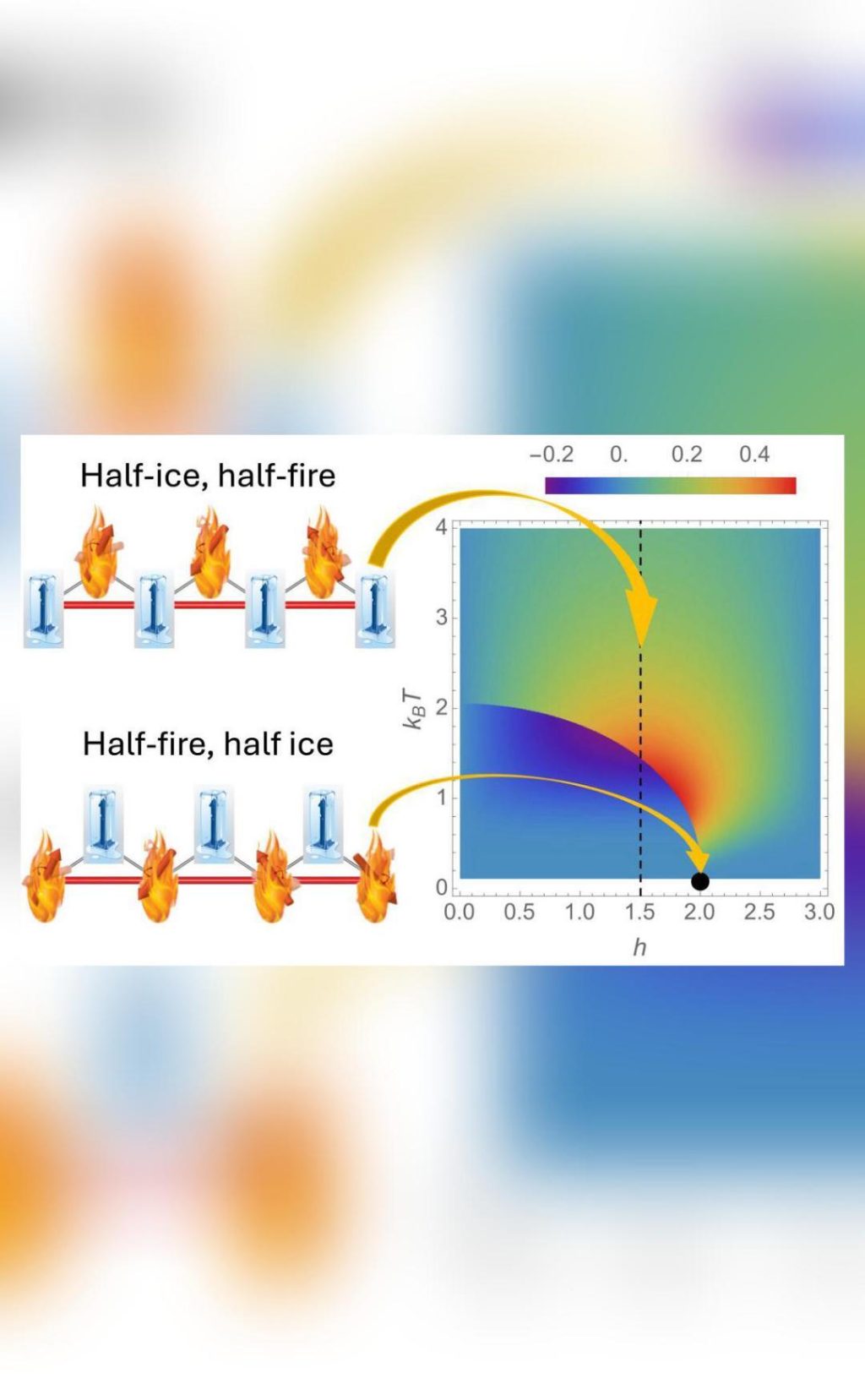
New Half Ice, Half Fire Phase of Matter Found
In a groundbreaking discovery, scientists at the US Department of Energy’s Brookhaven Lab have identified a new phase of matter that defies conventional understanding. This novel phase, dubbed “half ice, half fire,” is a one-dimensional ferrimagnet that features a unique blend of electron spins. The researchers’ findings, published in the journal Physical Review Letters, have significant implications for the energy and information technology industries.
The discovery was made possible through the use of cutting-edge techniques and advanced computational methods. The Brookhaven Lab team, led by physicist Dr. Feng Wang, used a combination of experimental and theoretical approaches to study the behavior of electrons in the one-dimensional ferrimagnet. The researchers were able to create a system that exhibited a distinct separation between “cold” and “hot” electron spins, with the cold spins being highly ordered and the hot spins being highly disordered.
“This is a truly remarkable finding,” said Dr. Wang. “By creating a system with both ordered and disordered electron spins, we’ve been able to tap into new properties that haven’t been seen before. The implications for energy and information technology are vast, and we’re excited to explore the potential applications.”
So, what exactly is this new “half ice, half fire” phase of matter? To understand, let’s take a step back and consider the properties of magnets. In a conventional magnet, the electron spins are aligned in a specific direction, creating a magnetic field. This alignment is often referred to as “order.”
In the new half ice, half fire phase, the researchers have created a system where the electron spins are divided into two distinct groups. The “cold” spins are highly ordered, meaning they are aligned in a specific direction, while the “hot” spins are highly disordered, meaning they are aligned in a random or chaotic manner.
The term “half ice, half fire” is a nod to the unique properties of this new phase. The cold spins can be thought of as the “ice” component, with their ordered alignment creating a sense of structure and predictability. The hot spins, on the other hand, can be thought of as the “fire” component, with their disordered alignment creating a sense of chaos and unpredictability.
This separation of electron spins has significant implications for the behavior of the material. For example, the cold spins can be used to create a stable magnetic field, while the hot spins can be used to create a dynamic and adaptive magnetic response.
The discovery of this new phase of matter has far-reaching potential applications in various industries. In the energy sector, the half ice, half fire phase could be used to create more efficient and sustainable energy storage solutions. The unique properties of this phase could also be used to develop more advanced magnetic materials for use in electric motors and generators.
In the information technology sector, the half ice, half fire phase could be used to create more advanced data storage solutions. The disordered hot spins could be used to create a highly adaptable and responsive magnetic response, allowing for more efficient and secure data storage and retrieval.
While the discovery of this new phase of matter is a significant breakthrough, the researchers acknowledge that there is still much work to be done to fully understand its properties and potential applications.
“This is just the beginning of our research into this new phase,” said Dr. Wang. “We’re eager to continue exploring its properties and potential applications, and we’re confident that it will have a major impact on various industries in the years to come.”
Source: https://journals.aps.org/prl/abstract/10.1103/PhysRevLett.133.266701






